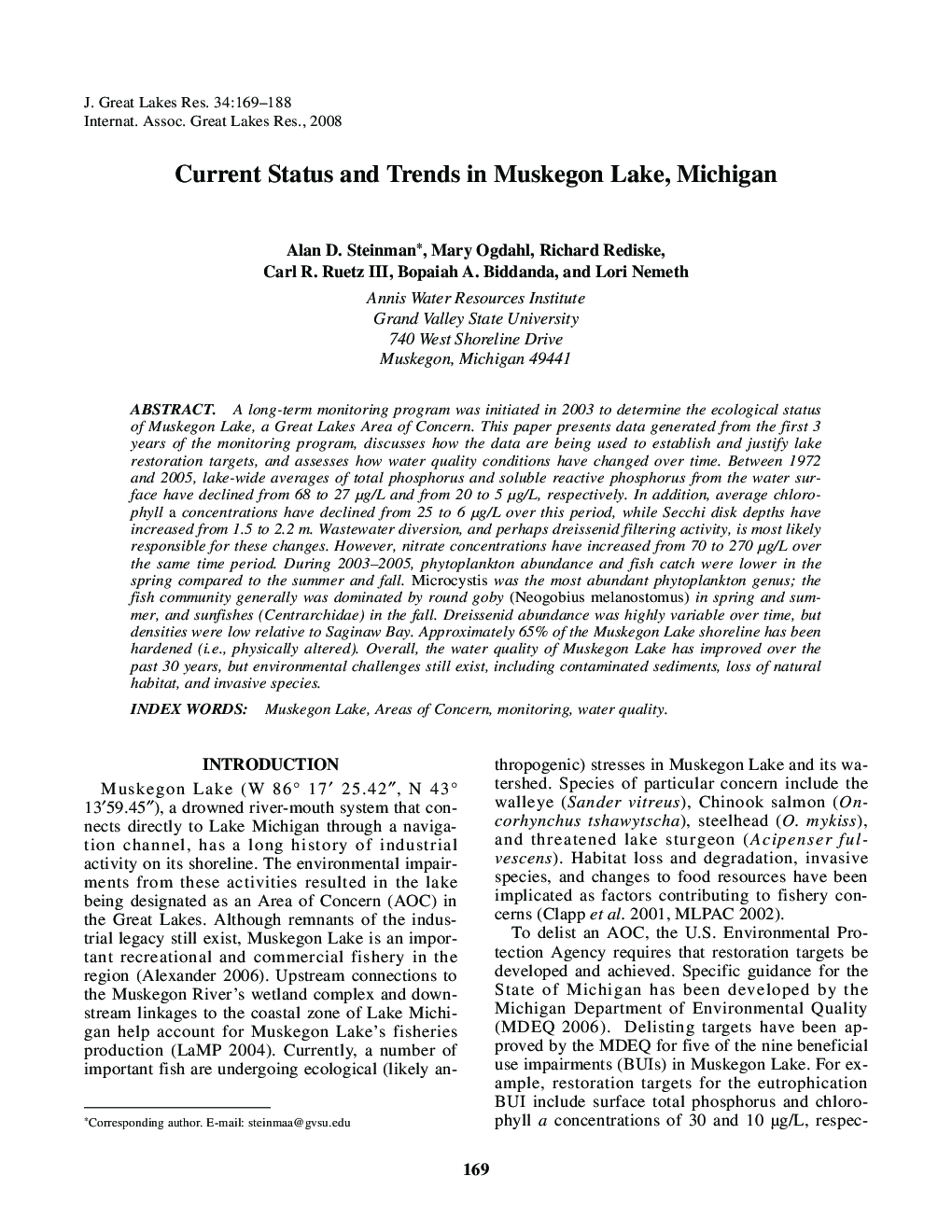| Article ID | Journal | Published Year | Pages | File Type |
|---|---|---|---|---|
| 4399417 | Journal of Great Lakes Research | 2008 | 20 Pages |
Abstract
A long-term monitoring program was initiated in 2003 to determine the ecological status of Muskegon Lake, a Great Lakes Area of Concern. This paper presents data generated from the first 3 years of the monitoring program, discusses how the data are being used to establish and justify lake restoration targets, and assesses how water quality conditions have changed over time. Between 1972 and 2005, lake-wide averages of total phosphorus and soluble reactive phosphorus from the water surface have declined from 68 to 27 μg/L and from 20 to 5 μg/L, respectively. In addition, average chlorophyll a concentrations have declined from 25 to 6 μg/L over this period, while Secchi disk depths have increased from 1.5 to 2.2 m. Wastewater diversion, and perhaps dreissenid filtering activity, is most likely responsible for these changes. However, nitrate concentrations have increased from 70 to 270 μg/L over the same time period. During 2003-2005, phytoplankton abundance and fish catch were lower in the spring compared to the summer and fall. Microcystis was the most abundant phytoplankton genus; the fish community generally was dominated by round goby (Neogobius melanostomus) in spring and summer, and sunfishes (Centrarchidae) in the fall. Dreissenid abundance was highly variable over time, but densities were low relative to Saginaw Bay. Approximately 65% of the Muskegon Lake shoreline has been hardened (i.e., physically altered). Overall, the water quality of Muskegon Lake has improved over the past 30 years, but environmental challenges still exist, including contaminated sediments, loss of natural habitat, and invasive species.
Related Topics
Physical Sciences and Engineering
Earth and Planetary Sciences
Earth and Planetary Sciences (General)
Authors
Alan D. Steinman, Mary Ogdahl, Richard Rediske, Carl R. III, Bopaiah A. Biddanda, Lori Nemeth,
